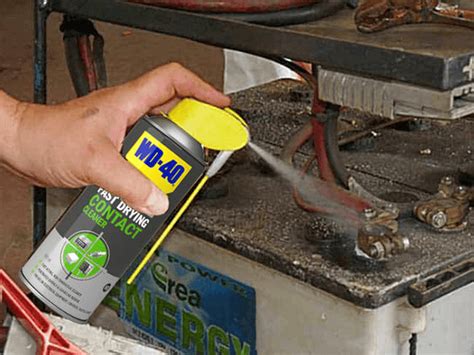How To Clean Off Battery Corrosion: A Comprehensive Guide
Battery corrosion is a common problem that can affect car batteries, flashlight batteries, and even some electronic devices. This corrosive buildup not only looks unsightly but can also hinder performance and even cause damage. This guide will walk you through how to safely and effectively clean battery corrosion, ensuring the longevity of your devices.
Understanding Battery Corrosion
Before diving into the cleaning process, it's crucial to understand what causes battery corrosion. Corrosion primarily occurs due to electrochemical reactions, where the battery's internal chemical processes interact with the surrounding environment. Factors contributing to this include:
- Electrolyte leakage: Batteries, particularly lead-acid batteries, contain electrolyte solutions that can leak, reacting with the metal terminals and creating corrosion.
- Moisture: Humidity and exposure to water accelerate the corrosive process.
- Heat: Extreme temperatures can also hasten corrosion formation.
Safety First: Essential Precautions
Cleaning battery corrosion requires careful attention to safety. Always prioritize these steps:
- Wear protective gear: Use safety glasses to protect your eyes from splashing chemicals, and rubber gloves to prevent skin irritation.
- Work in a well-ventilated area: Battery corrosion can release harmful fumes.
- Disconnect the battery: Before attempting any cleaning, disconnect the battery terminals from the device to prevent electrical shock.
- Baking soda preparation: Prepare a baking soda paste by mixing baking soda with water to a paste-like consistency.
Cleaning Battery Corrosion: Step-by-Step Guide
Here's a step-by-step guide to effectively clean battery corrosion, using readily available materials:
1. Assess the Corrosion
Carefully examine the extent of the corrosion. Is it a light surface coating or a more substantial buildup? This will determine the cleaning method and time required.
2. Prepare Your Cleaning Solution
As mentioned, a paste of baking soda and water is highly effective. Avoid using harsh chemicals like muriatic acid, as these can cause further damage.
3. Apply the Cleaning Solution
Gently apply the baking soda paste to the corroded areas using an old toothbrush or a small brush. Let it sit for a few minutes to allow the baking soda to react with the corrosion.
4. Scrub Gently
Once the paste has sat for a few minutes, gently scrub the corroded areas using your brush. Work carefully to avoid damaging the battery terminals.
5. Rinse and Dry
Thoroughly rinse the battery terminals with clean water to remove all traces of the baking soda paste. Then, thoroughly dry the terminals using a clean cloth.
6. Inspect and Repeat
Inspect the battery terminals again. If any corrosion remains, repeat steps 3-5 until the terminals are clean.
7. Apply Petroleum Jelly (Optional)
For added protection, apply a thin layer of petroleum jelly to the cleaned battery terminals. This helps prevent future corrosion.
8. Reconnect the Battery
Once everything is dry, carefully reconnect the battery terminals to your device.
Preventing Future Corrosion
Preventing battery corrosion is just as important as cleaning it. Here are some preventative measures:
- Keep the battery terminals clean: Regularly inspect your battery terminals and clean them as needed.
- Ensure proper ventilation: Avoid storing batteries in damp or poorly ventilated areas.
- Use battery protectors: Consider using battery terminal protectors to prevent moisture and debris from reaching the terminals.
- Check battery health regularly: Replace old or damaged batteries promptly.
By following these steps and preventative measures, you can effectively clean off battery corrosion and extend the life of your batteries. Remember, safety is paramount; always take the necessary precautions before starting any cleaning process.
